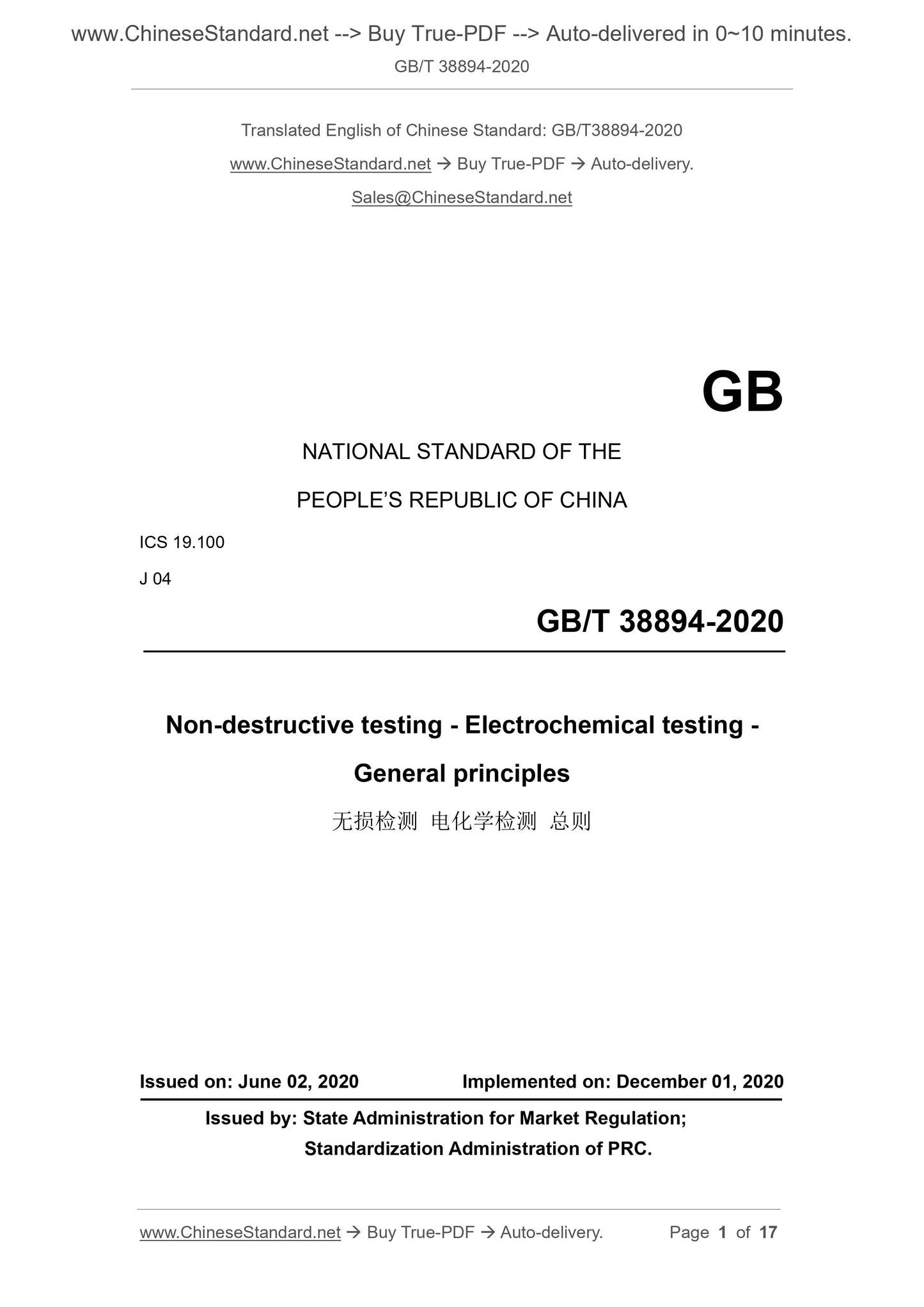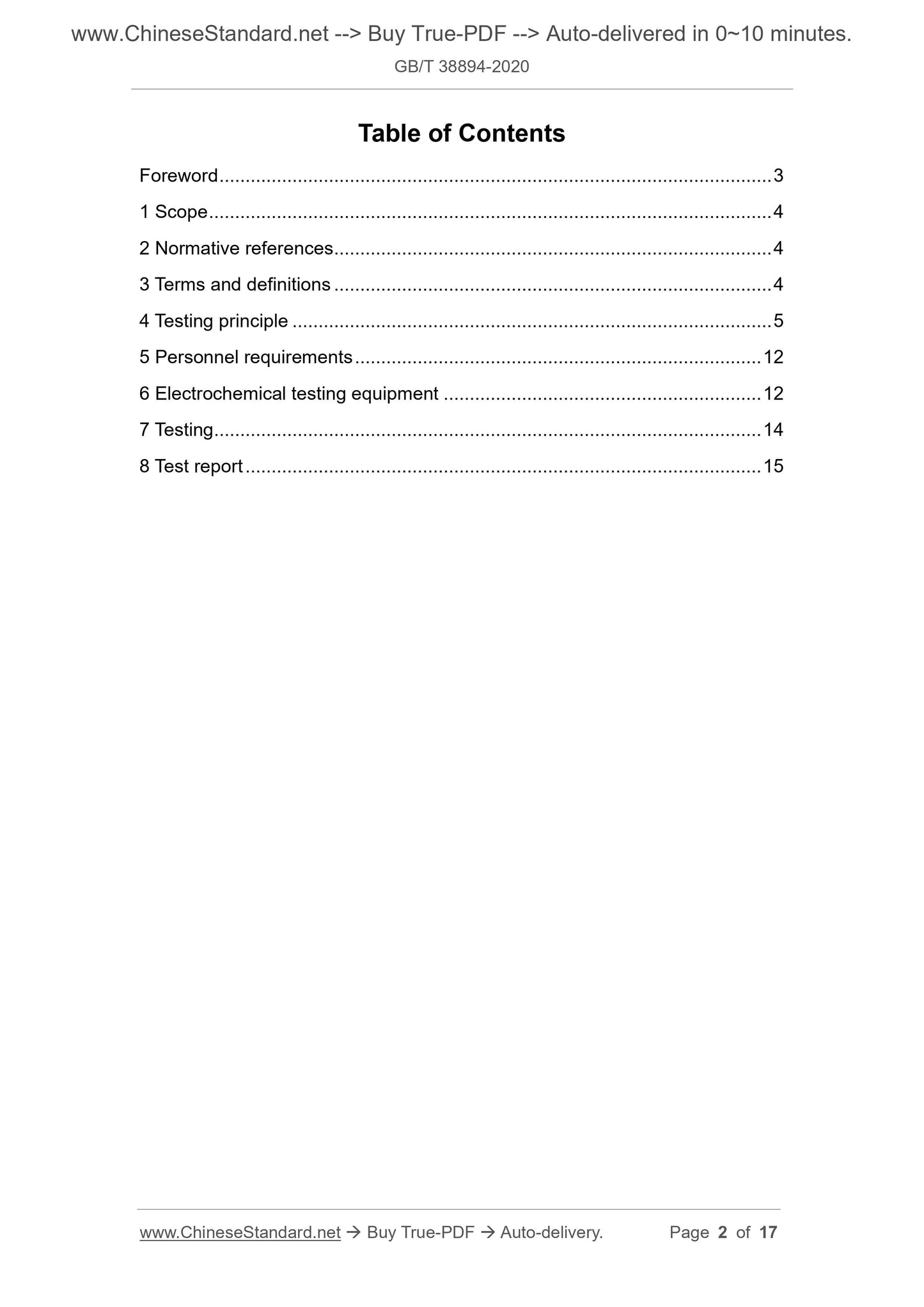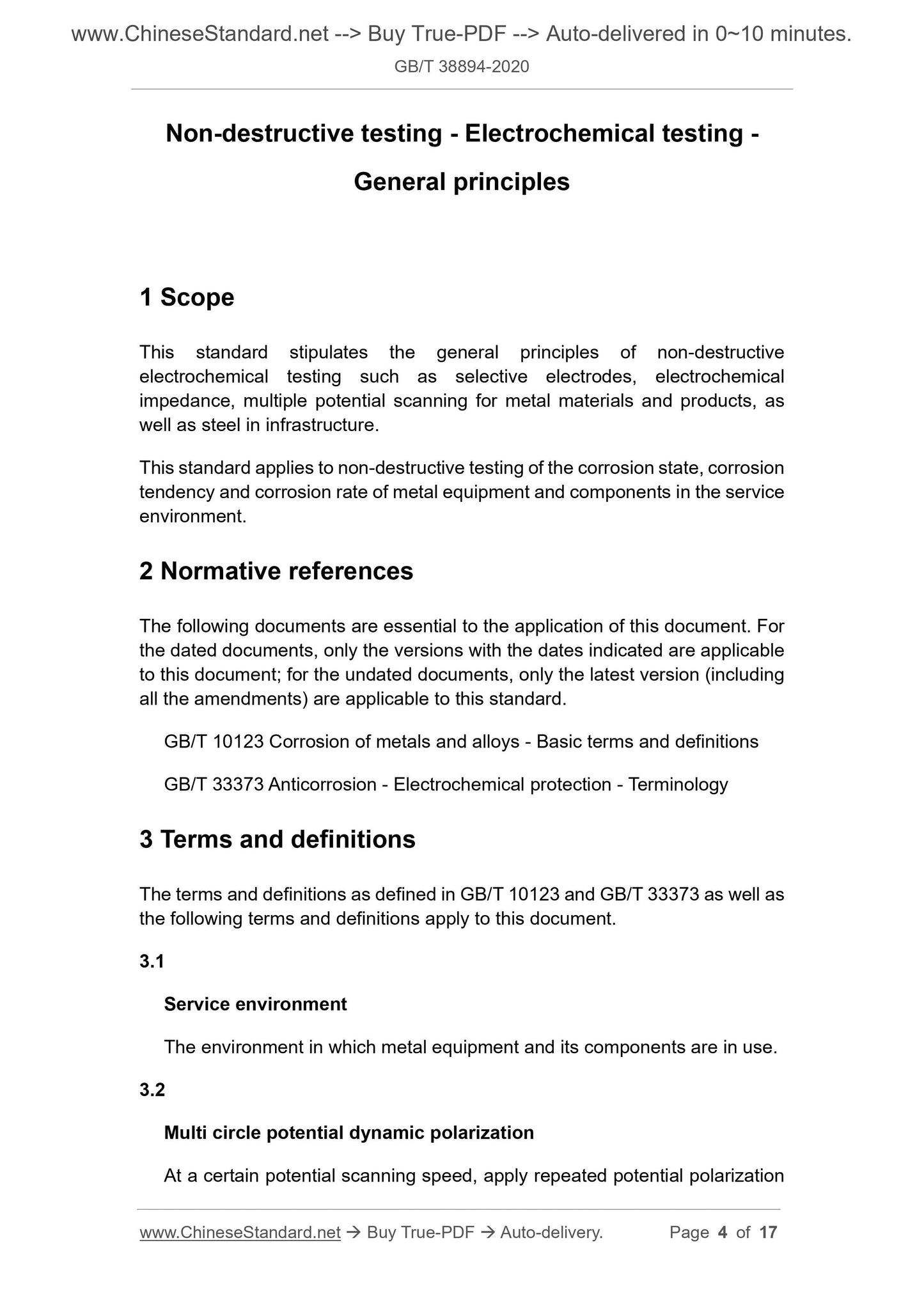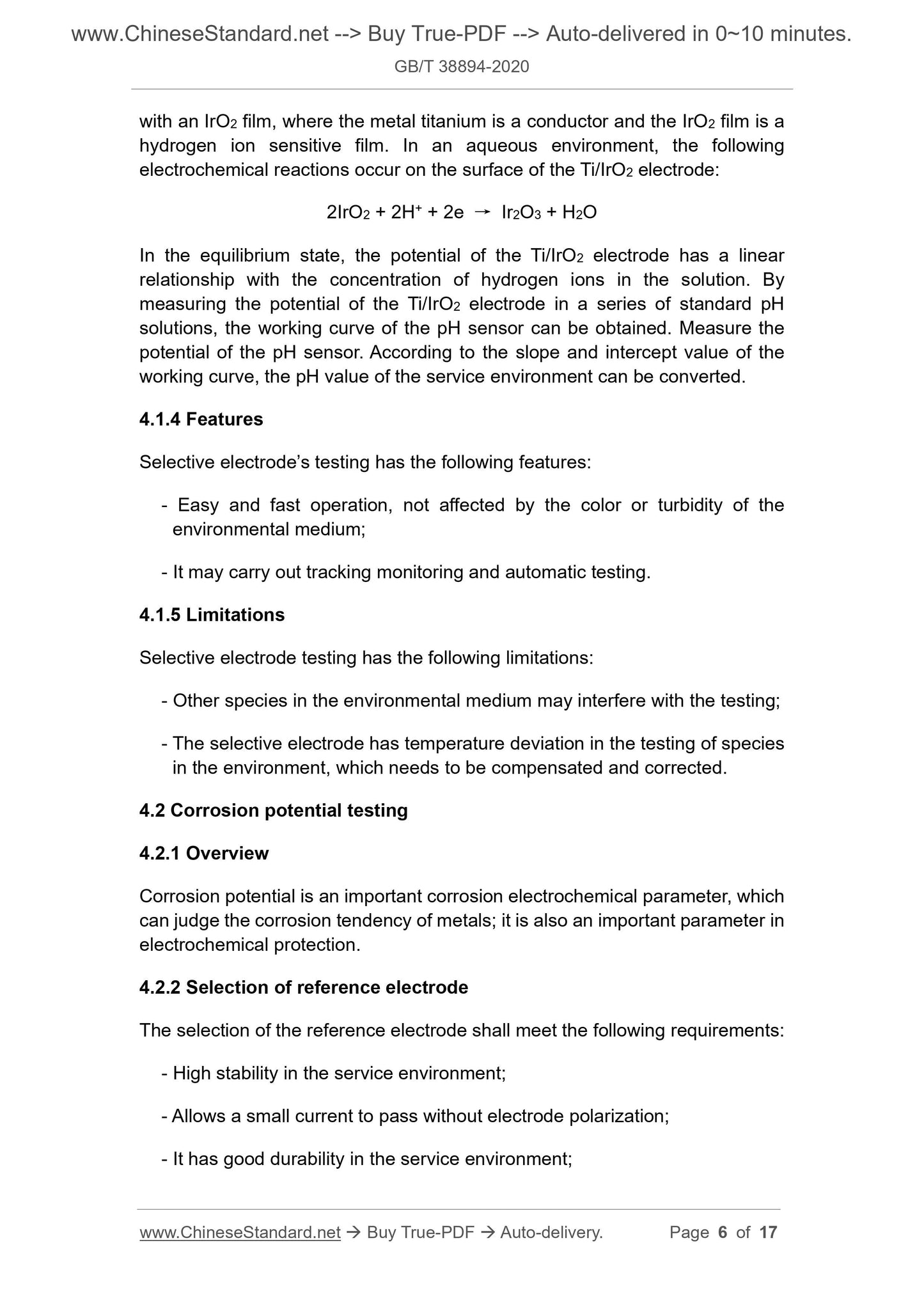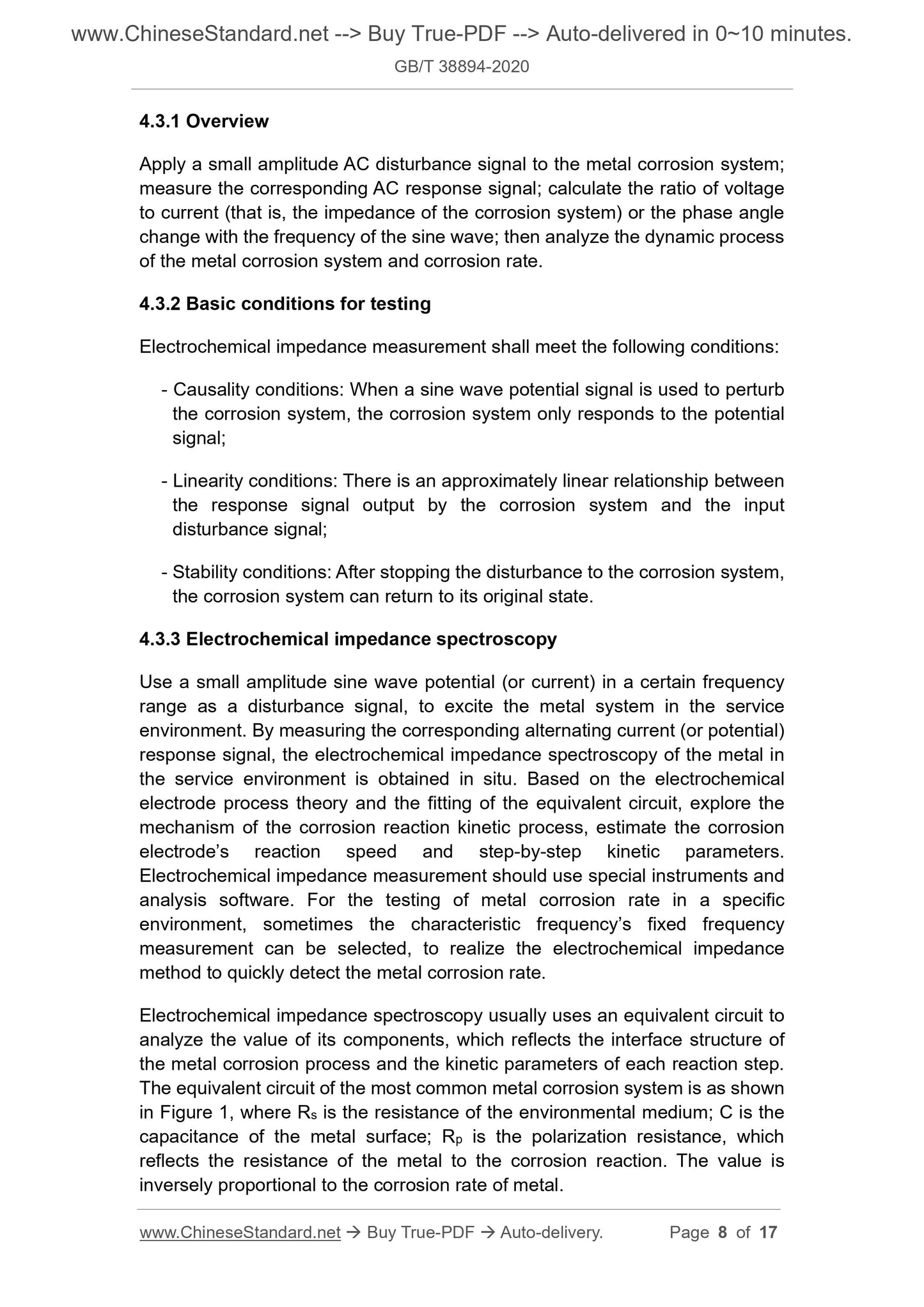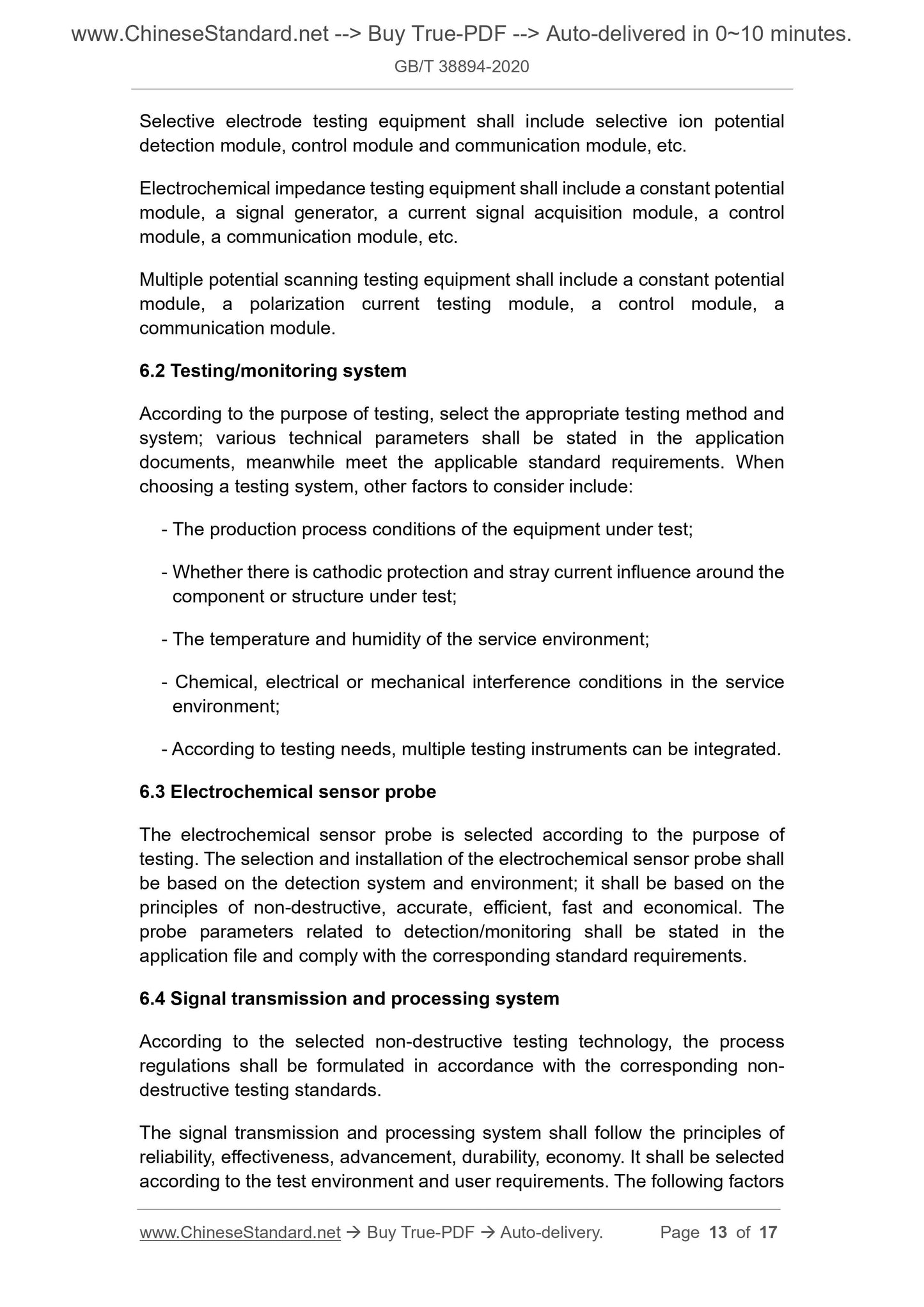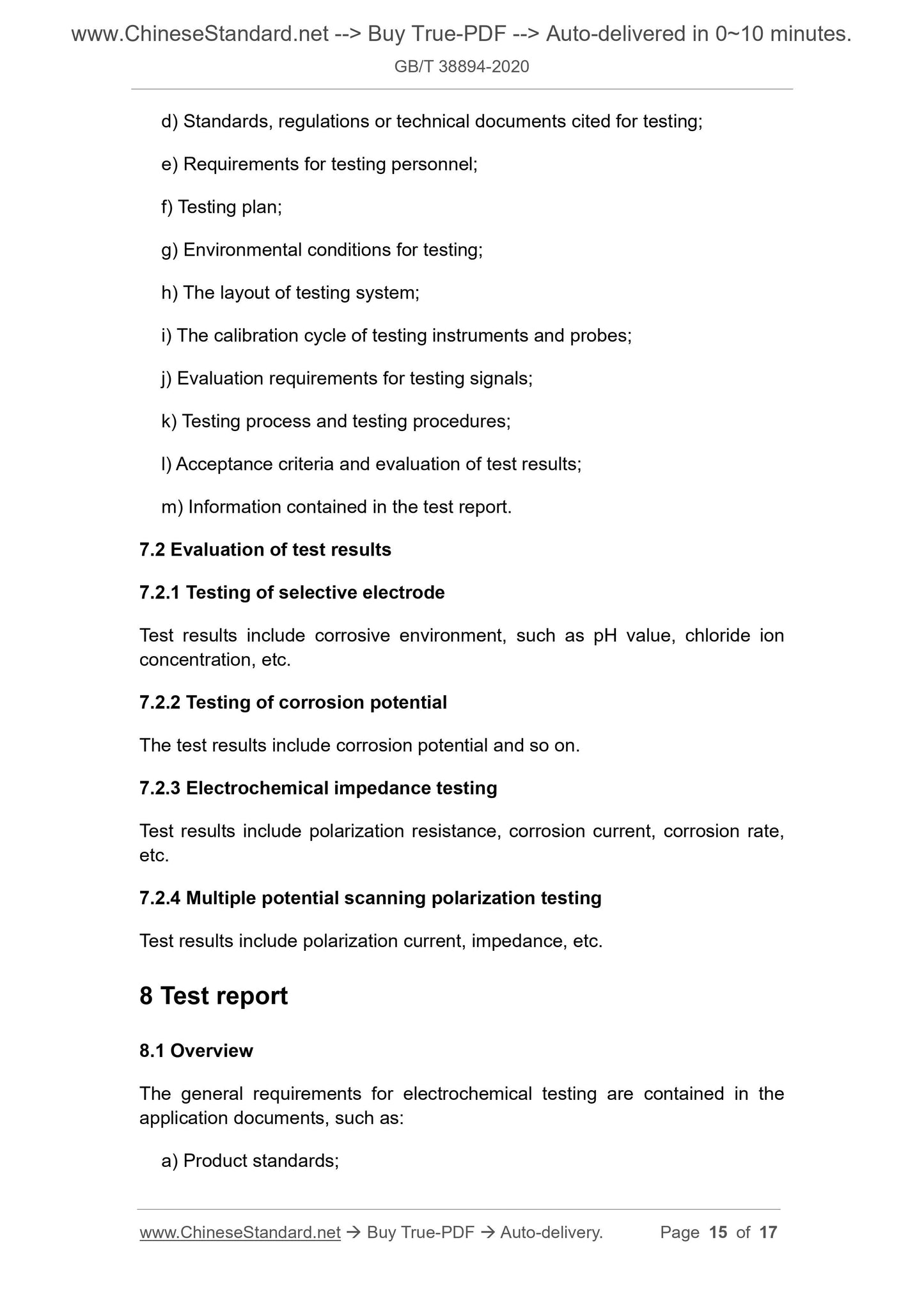1
/
of
7
www.ChineseStandard.us -- Field Test Asia Pte. Ltd.
GB/T 38894-2020 English PDF (GB/T38894-2020)
GB/T 38894-2020 English PDF (GB/T38894-2020)
Regular price
$170.00
Regular price
Sale price
$170.00
Unit price
/
per
Shipping calculated at checkout.
Couldn't load pickup availability
GB/T 38894-2020: Non-destructive testing - Electrochemical testing - General principles
Delivery: 9 seconds. Download (and Email) true-PDF + Invoice.Get Quotation: Click GB/T 38894-2020 (Self-service in 1-minute)
Newer / historical versions: GB/T 38894-2020
Preview True-PDF
Scope
This standard stipulates the general principles of non-destructiveelectrochemical testing such as selective electrodes, electrochemical
impedance, multiple potential scanning for metal materials and products, as
well as steel in infrastructure.
This standard applies to non-destructive testing of the corrosion state, corrosion
tendency and corrosion rate of metal equipment and components in the service
environment.
Basic Data
| Standard ID | GB/T 38894-2020 (GB/T38894-2020) |
| Description (Translated English) | Non-destructive testing - Electrochemical testing - General principles |
| Sector / Industry | National Standard (Recommended) |
| Classification of Chinese Standard | J04 |
| Classification of International Standard | 19.100 |
| Word Count Estimation | 14,145 |
| Date of Issue | 2020-06-02 |
| Date of Implementation | 2020-12-01 |
| Issuing agency(ies) | State Administration for Market Regulation, China National Standardization Administration |
Share
